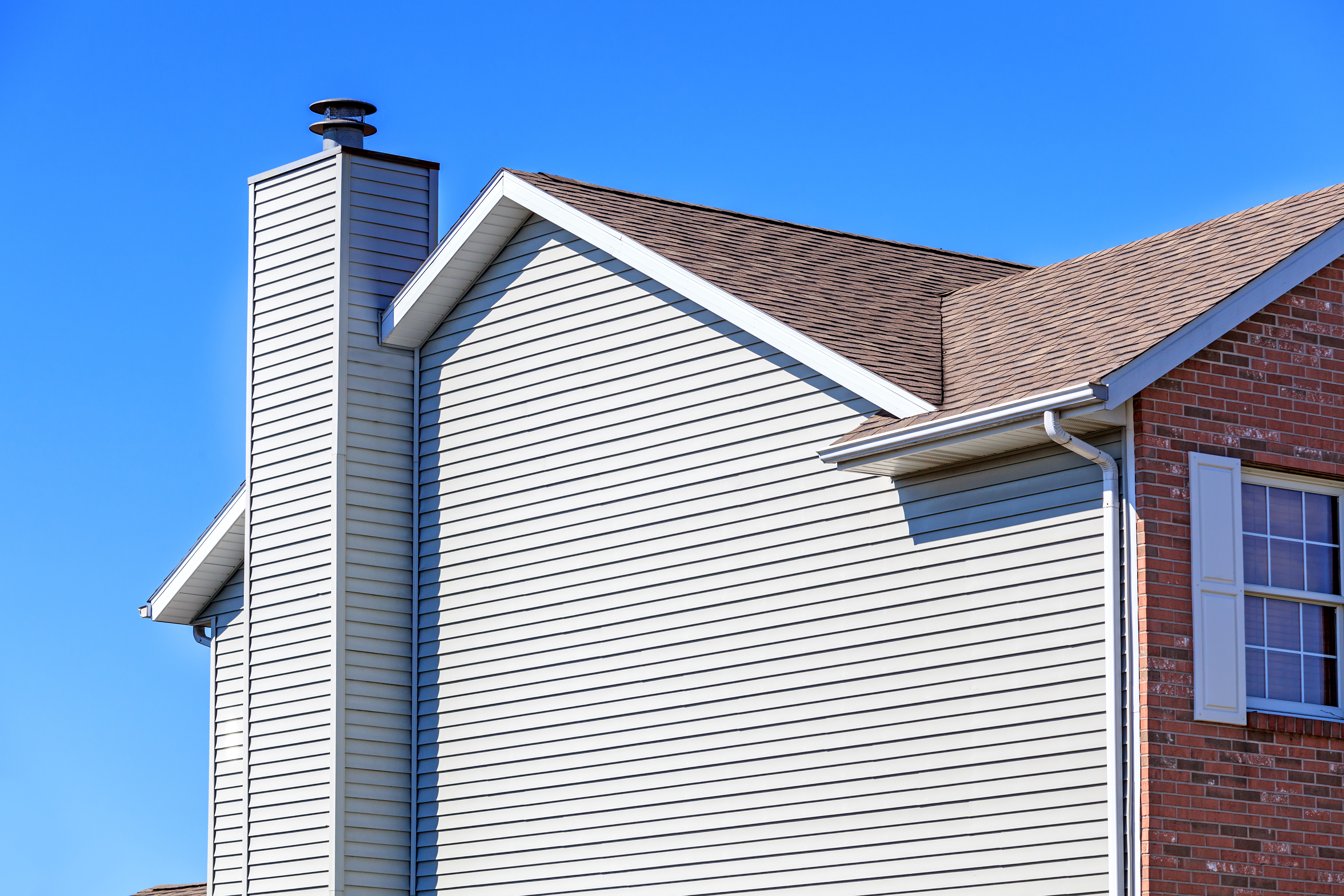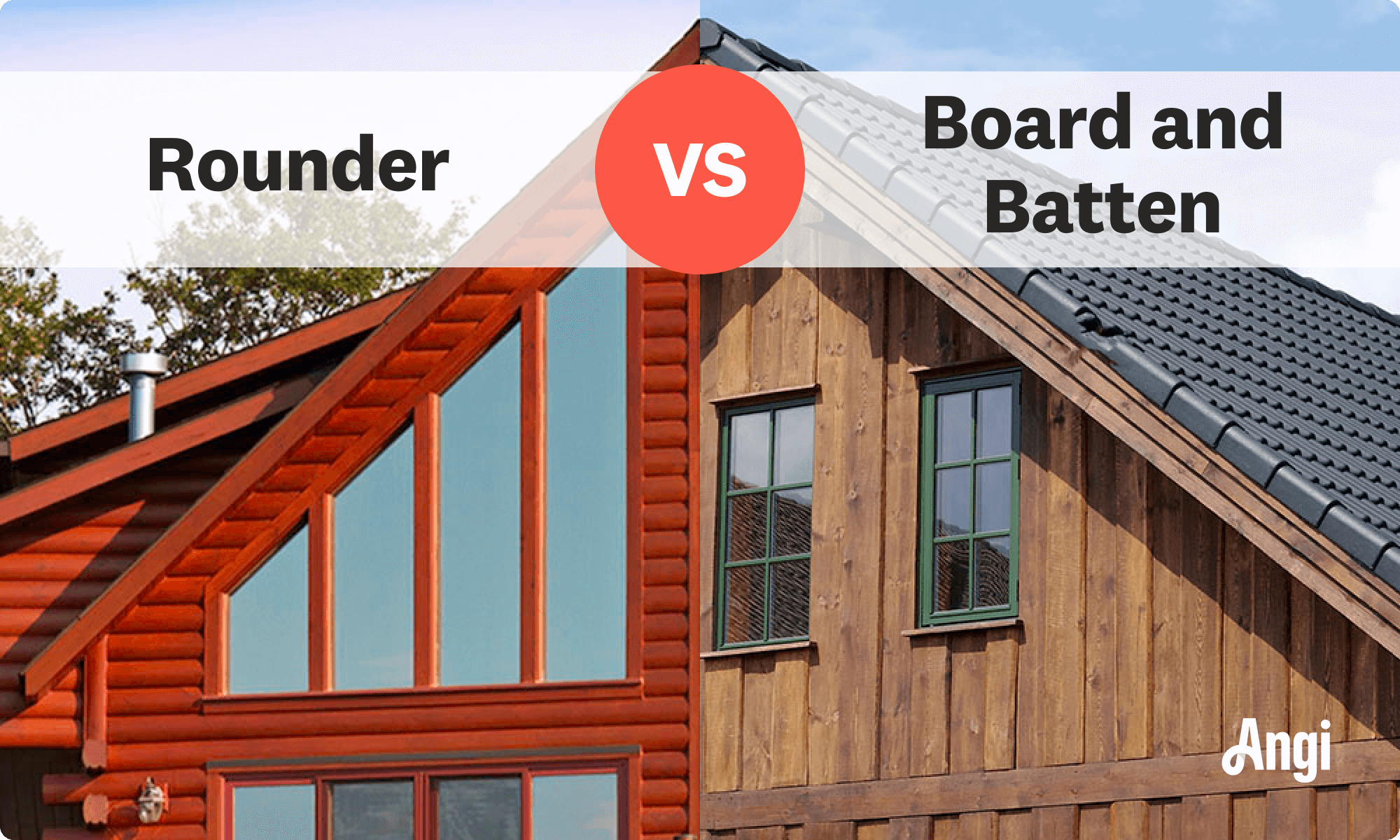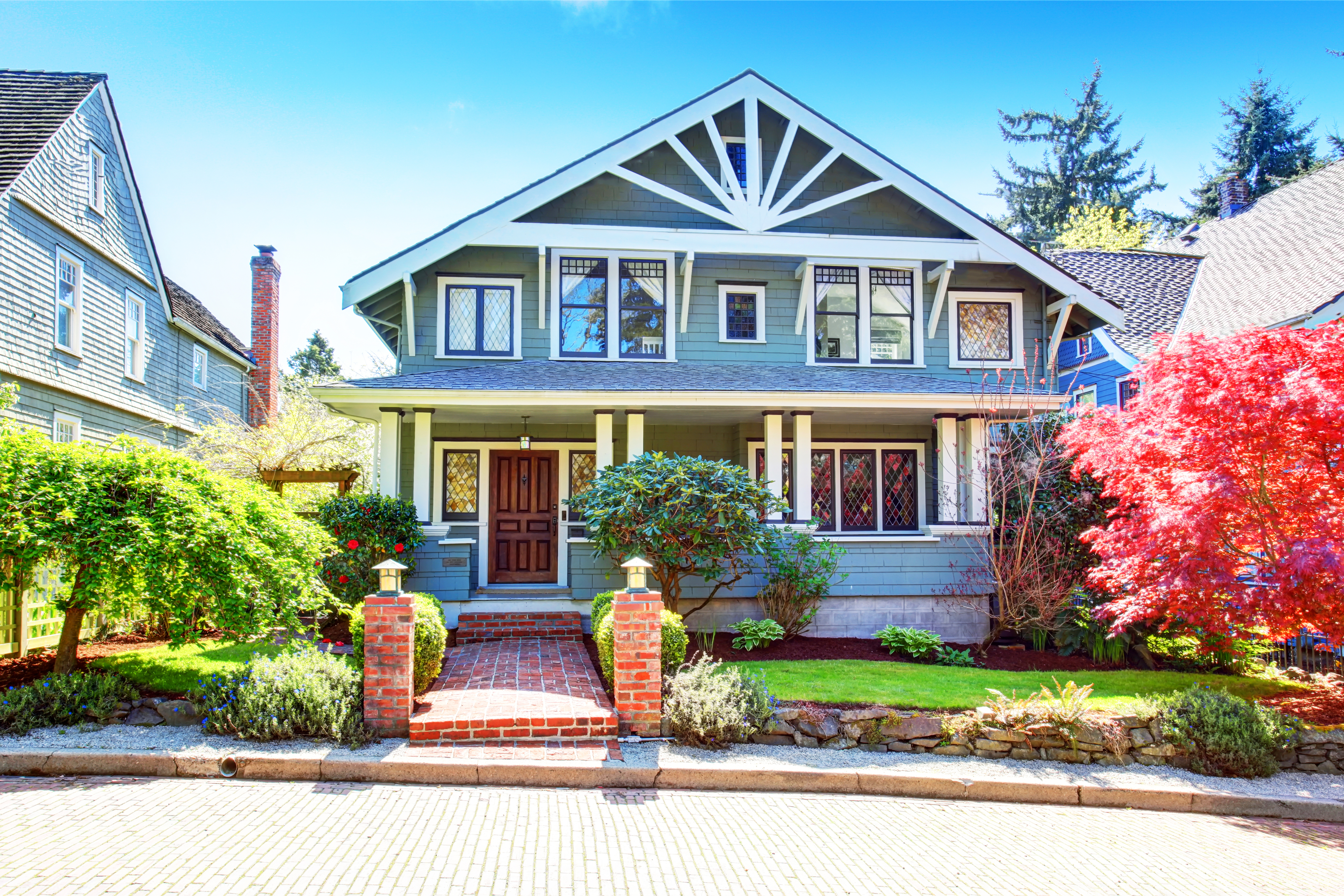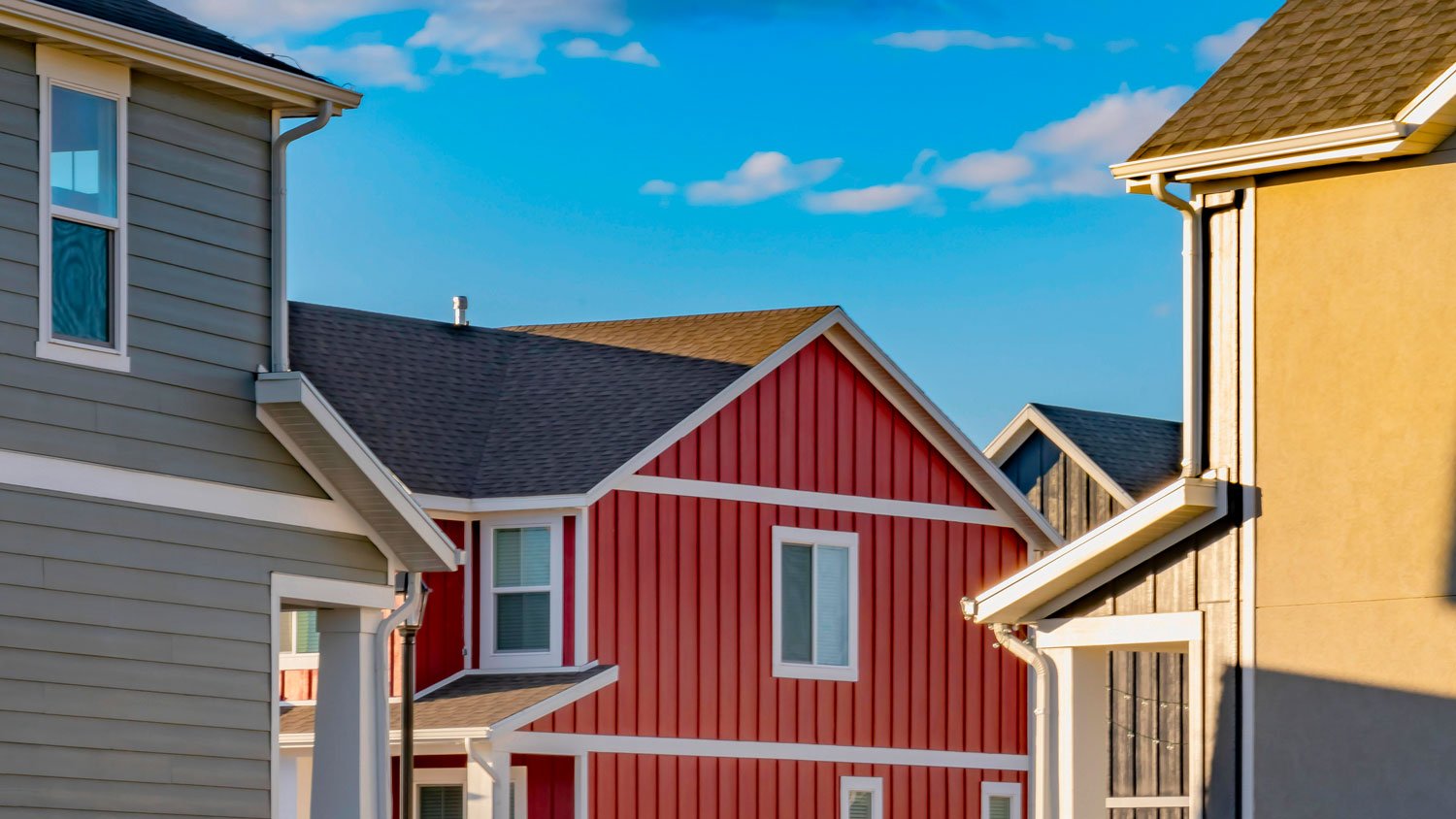
In addition to protecting against extreme Midwest temperatures, new siding in Columbus adds curb appeal. Learn about siding replacement cost in Columbus.
Siding service costs depend on your project and location. Check with a local pro for your specific job.
The size of your home and the style of concrete log siding you choose are the most important factors to consider.
Concrete log siding costs 20% more than traditional wood, on average, but less maintenance means savings over time.
Don’t forget to budget for permits and old siding removal, which can add $1,200 to $3,500 to your total.
Concrete log siding is heavy and may require structural changes to your home, which can drive up costs.
Concrete log siding costs an average of $34,000 to install on a standard, 2,000-square-foot home, and most projects total between $20,400 and $47,600. You could pay as little as $14,400 if you have a smaller home and opt for GFRC concrete log siding or as much as $61,600 if you have a larger home and want structural concrete log siding.
While you can install siding yourself, we recommend contacting a pro. Improper installation can decrease the lifespan of the siding and cost more money in the long run.
Concrete log siding costs between $12 and $28 per square foot. If you know how to measure for siding, you can figure out how many square feet of siding you need and then use the average cost of $20 per square foot to get an accurate estimate.
The cost to install concrete log siding doesn’t always scale perfectly with the size of your living space, but you can also use the table below to get a rough estimate for your total based on the footprint of your house.
| Home Size (Sq. Ft.) | Average Cost | Cost Range |
|---|---|---|
| 1,000 | $24,000 | $14,400–$33,600 |
| 1,500 | $29,000 | $17,400–$40,600 |
| 2,000 | $34,000 | $20,400–$47,600 |
| 2,500 | $39,000 | $23,400–$54,600 |
| 3,000 | $44,000 | $26,400–$61,600 |
When you install concrete log siding, you have some options for the type of concrete material and the style of the siding.
Most homeowners will remove their old siding and replace it with concrete log siding, which costs an average of $20 per square foot. This type of siding is made of lightweight and durable glass fiber reinforced concrete (GFRC). The cost will vary depending on the siding design, with rounded logs costing more than flat planks.
If you’re building new construction, you can choose structural concrete log siding, which includes a concrete facade over insulation and a structural concrete wall behind it. This type of concrete log siding will cost you between $140 and $160 per square foot, but it also provides the structural base for your home.
| Siding Style | Cost per Sq. Ft. |
|---|---|
| Board and batten plank | $16–$28 |
| 10-in. planks | $12–$20 |
| 16-in. planks | $16–$28 |
| 10-in. round | $14–$24 |
| 12-in. round | $16–$28 |
| Structural siding | $140–$160 |

Where you live will affect your concrete log siding costs, both because of fluctuations in labor costs based on the local cost of living and because of shipping costs. Concrete log siding isn’t nearly as popular as vinyl siding or traditional wood siding, so you may incur higher shipping costs in areas far from manufacturing sites.
| State | Average Cost |
|---|---|
| California | $49,200 |
| Florida | $34,800 |
| Georgia | $31,100 |
| Illinois | $32,500 |
| Michigan | $31,400 |
| New York | $42,000 |
| North Carolina | $33,200 |
| Ohio | $32,300 |
| Pennsylvania | $32,300 |
| Texas | $31,500 |
While home size, material options, and location are the most significant cost factors to consider, there are some other things that can influence your total.
The more complex your home is, the more it will cost to install concrete log siding for a few reasons. First, bump-outs and dormers require more labor to cut and lead to more siding waste, both of which drive up pricing. Non-standard wall shapes can also mean it takes longer to install siding, requiring special cuts and measuring that demand more in labor costs.
Wall openings for doors and windows and the corners where walls meet also need corner pieces, trim, windowsills, and accent blocks. These materials cost more than standard siding panels, so, again, complexity drives up prices. If your home is tall enough to require installers to use scaffolding, or if it features a lot of detailed work that needs additional precision, labor costs can rise steeply.
Replacing siding usually means you’ll have to remove the old siding first, which can add between $1,000 and $3,000 to your total installation costs. Prices push toward the higher end of that range for heavy materials, like stone or brick siding, and for complicated siding options to remove, like stucco. Vinyl, wood, and fiber cement will sit closer to the lower end of that range.
You can remove your old siding yourself to save money, but you’ll still need to pay $20 to $50 per ton if you’re going to dump the waste yourself, or between $100 and $800 for pick-up.
In most cases, concrete log siding is pre-sealed from the manufacturer, but if you purchase unsealed materials, you can expect to pay between $500 and $2,000 for professional application. Unsealed concrete is porous and will absorb water, so sealing is always a good idea, especially if you live in an area with heavy moisture and rain.
If you are purchasing concrete log siding from a manufacturer located far from your home, you may need to pay higher-than-average shipping and delivery costs. The distance and size of the shipment can affect the overall expense and add between $500 and $2,000 to your total. Some manufacturers may offer free or discounted delivery if you live nearby, so check with your manufacturer before budgeting for this expense.
Most municipalities will require a permit for siding replacement. Siding permits can add between $100 and $1,000 to your total. Your local building department or the siding contractor you hire will be able to confirm the specific permit costs in your area.
Concrete log siding is more durable than traditional wood log siding, and while it costs more up front, you’ll spend far less in the long run on maintenance and upkeep. Still, there are some ongoing costs you should consider to manage your long-term budget.
| Maintenance Type | Frequency | Cost |
|---|---|---|
| Power washing | Annually | $200–$450 |
| Repairs | As needed | $100–$2,000 |
| Resealing | Every 2–5 years | $500–$2,000 |
It’s possible to install concrete log siding yourself, and some manufacturers offer packages designed to make DIY installation as easy as possible. The pre-finished siding and accent pieces are packaged in crates and shipped directly to the consumer. Tackling the installation yourself can save you an average of $13,600.
However, unless you have experience installing siding and a working knowledge of local building codes, you will likely save time and money in the long run by hiring a pro. Concrete log siding is heavy and challenging to install, and any mistakes can lead to leaks, water damage, mold growth, and even structural damage that can cost far more than you’d save by DIYing in the first place.
Plus, professional installation will often avoid gaps and cracks, maximizing energy efficiency and saving you money on heating and cooling costs over time. Contact a siding contractor near you for the best results and maximum curb appeal.
If you already have concrete log siding installed on your home but it’s reaching the end of its life or isn’t providing the same curb appeal it did when it was new, you’ll have to decide between repairing and replacing it. Repairs are almost always more affordable, but if the total siding repair cost is 50% or more of the replacement cost, you’ll get more for your money in the long run by replacing.
You should also replace rather than repair if you’ve had ongoing problems with siding leaks or if your siding is reaching the end of its lifespan anyway. For reference, concrete log siding lasts for 30 to 50 years.
| Factor | Repair | Replace |
|---|---|---|
| Cost of Repairs vs. New Siding | Repairs cost 30% of replacement or less | Repairs cost 50% of replacement or more |
| Age of Siding | Siding is younger than 25 years | Siding is 30 years or older |
| Curb Appeal | Still good after power washing | Visible damage detracting from appearance |
| Water Damage | No leaks | Multiple leaks and/or mold issues |
If you're looking to reduce the cost of installing concrete log siding or any type of siding, consider the following money-saving strategies:
DIY simple tasks: While hiring professionals is best for the overall installation, you may be able to tackle simpler tasks, such as painting or sealing the siding, or even removing your old siding before the new siding goes up.
Opt for standard profiles: Choosing standard siding profiles instead of more intricate designs can help lower the cost per square foot.
Look for off-season discounts: Contractors may offer discounts during slower seasons, so consider scheduling the installation during off-peak times to save on labor costs. The best time of year to install siding for savings is early spring.
Go with a nearby manufacturer: Delivery costs can add thousands to your total, so choose a manufacturer with a plant near your home, if possible.
Updating siding will boost home value, and the average return on investment (ROI) for replacing siding is around 69%. Concrete log siding can provide an ROI of up to 100%, adding an average of $34,000 to your home value. You’ll see the highest ROI from this project in areas where the log cabin aesthetic is highly desirable and in areas where wildfires make this fire-resistant siding material a sought-after option.
Home is the most important place on earth, which is why Angi has helped more than 150 million homeowners transform their houses into homes they adore. To help homeowners with their next project, Angi provides readers with the most accurate cost data and upholds strict editorial standards. We extensively research project costs to develop the pricing data you see, so you can make the best decisions for you and your home. We rely on reputable sources, including the U.S. Bureau of Labor Statistics, academic journals, market studies, and interviews with industry experts—all to ensure our prices reflect real-world projects.
Want to help us improve our cost data? Send us a recent project quote to [email protected]. Quotes and personal information will not be shared publicly.
From average costs to expert advice, get all the answers you need to get your job done.

In addition to protecting against extreme Midwest temperatures, new siding in Columbus adds curb appeal. Learn about siding replacement cost in Columbus.

The cost of siding repair varies depending on material, design, and damage. This helpful guide covers the siding repair costs to expect in Columbus, Ohio.

Fiber cement siding is durable, fire-resistant, and affordable. Learn more about fiber cement installation costs in Columbus, OH.

Show off your home’s character and aesthetics with the right siding style. Learn more about eight popular siding styles and what sets them apart.

This rundown of common types of metal siding will help you decide which type of metal siding is right for your home based on style, performance, and price.

Your home’s siding makes a big impact on its overall appearance. Use this guide to find the perfect siding color to refresh your aesthetic and boost your home’s curb appeal.